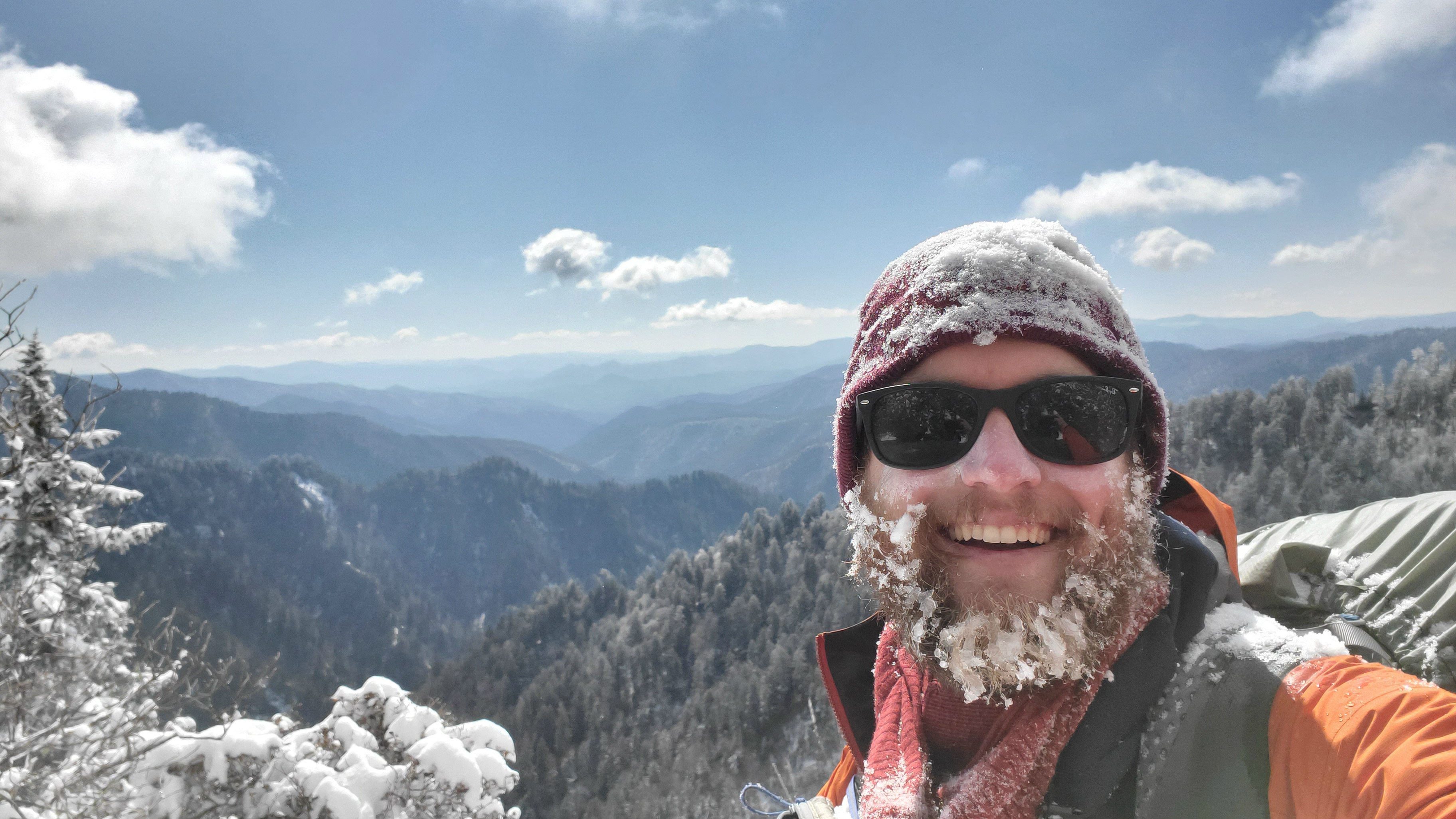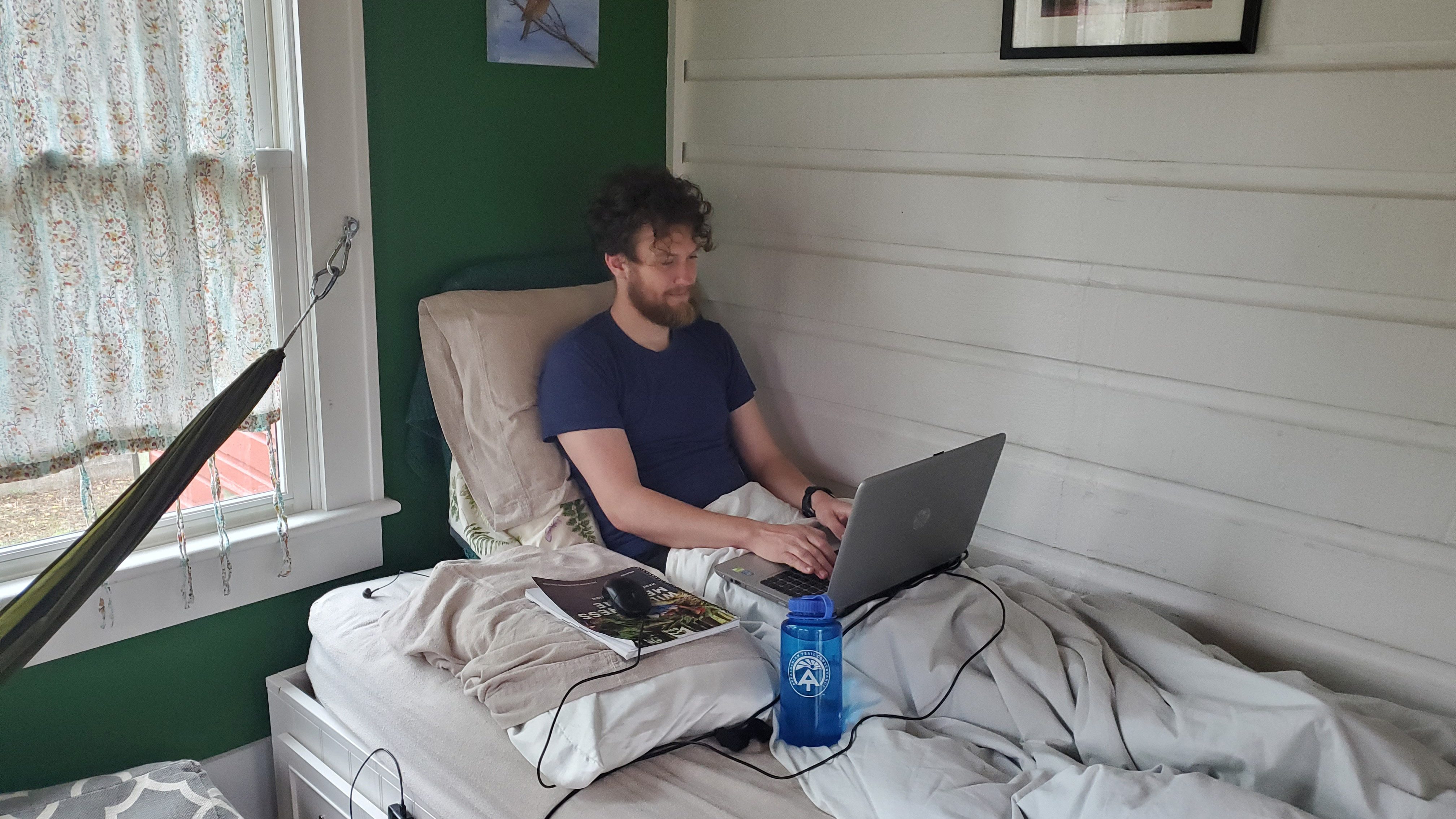By David McDowell Schafer
I Was Hired to Be a Ridgerunner
May 8, 2020
The response to COVID-19 is constantly evolving throughout the world, and the ATC is frequently updating its guidance and listings of Trail-related closures and travel restrictions. To make sure you have the most up-to-date information, please visit appalachiantrail.org/covid19.
In late March 2020, the Appalachian Trail Conservancy (ATC) asked all hikers to postpone or cancel their hikes on the Appalachian Trail due to COVID-19. That request included thru-hikers, section-hikers, backpackers, and even day-hikers. The ATC and other local land management organizations continue to release guidelines as the situation evolves. This is my story on how COVID-19 has affected my role within the ATC.
I was hired by the Appalachian Trail Conservancy (ATC) to be a ridgerunner in the Smokies. “What’s a ridgerunner?” you may ask. A ridgerunner is a boots-on-the-ground educator who helps the public to enjoy the A.T. safely and responsibly and preserve it for future generations. In my duties, I patrol a section of the A.T. four days and three nights each week, educate hikers on Leave No Trace principles and the regulations in the Smokies, clear the Trail of fallen trees, maintain shelters and privies, and perform many other tasks vital to the health of the Trail. If you’ve hiked on the A.T. in the Smokies, you’ve probably run into at least one of us. And if you’re backpacking or thru-hiking, we’ve probably asked to see your permit. In short, there’s a lot of work to be done and it’s almost exclusively outside.
When I reached Newfound Gap in the Great Smoky Mountains National Park on March 14th, the parking lot was crowded with people ready to hit the Appalachian Trail (A.T.). That morning had been a mess of rain and fog, but by the afternoon the sun was peeking through the clouds and that was all the excuse anyone needed to do a last-minute day-hike. I had already passed over 100 day-hikers going to Charlie’s Bunion, a popular destination with lovely views of the high ridgelines of the Smokies. It was a busy day for the A.T. and there were no signs of it slowing down.
News in the backcountry moves slowly. Even though almost everyone has a smartphone and uses apps like Guthook to navigate on the A.T., there is a delay in the spread of information. I had spent the night before at Icewater Spring Shelter, a designated backcountry site roughly three miles north of Newfound Gap. Twelve other hikers and I had crammed into the shelter to avoid the blustery, cold winds that swept the site overnight. I knew that COVID-19 was a growing concern, but in the moment, it seemed far from the Trail. I was more worried about a cold night than a virus. Spring breakers told me how college campuses were closing. I heard the NBA was postponing their season. However, there didn’t seem to be a lot of concern on the Trail itself. All the problems seemed far from the A.T. To everyone, the Trail seemed like a haven, a safe place from the unsettling worry that was growing in civilization.
When I left Newfound Gap and got back to basecamp, I finally caught up to the torrent of news that I had been missing. COVID-19 was a genuine and scary risk. The number of people infected with the virus were still small compared to other countries but was growing rapidly each day. I thought about all the people I interacted with on the Trail, including the twelve other hikers I shared a shelter with the night before and the over 100 day hikers visiting from all over the world that I talked to and passed close by on a narrow stretch of trail. I thought about how, even in the backcountry (or maybe especially so), the risk of contracting and spreading this highly contagious virus was all too plausible.
A few days later, when my supervisor told me and the other ridgerunners that we weren’t going back into the field, I had mixed emotions. A part of me was relieved; I was honestly afraid to go back on the Trail, where the backcountry setting, high visitor-use, and narrow sections of trail made behaviors such as proper hygiene and social distancing difficult. I was afraid I couldn’t do my job effectively, afraid that I could get sick and spread the virus to other hikers. The other part of me was sad. Sad I wouldn’t meet all the thru-hikers going north on their long trek to Katahdin. Sad I wasn’t going to see the Smokies during their transition of the seasons from winter, to spring, summer, and fall. Sad I couldn’t spend every week outside maintaining the Trail that has been such an influential part of my life.
I’ve transitioned to working from home, which is the last place you expect a Ridgerunner to be. You may wonder, how can one ridgerun from home?
One doesn’t. Or at least not in the same way.
I’ve returned to my home in Asheville, North Carolina, and my office has shifted from the Trail to a computer on the kitchen table. I’ve never needed a desk for my line of work, so the table works for now. My responsibilities for the ATC have changed dramatically due to COVID-19. No longer do I patrol the A.T. Instead, I write articles (like this one) and help keep the website updated on COVID-19 news and closures. Most recently, I’ve been researching and writing an article about southern Appalachian grassy balds. I’ve been filming educational videos on topics like how to reduce your pack weight (it turns out editing is a lot harder than I expected it to be). I manage a spreadsheet that tracks the number of COVID-19 cases in A.T. counties (which is a lot) and the numbers continue to grow. It’s not the job I signed up for, but it’s what is needed. I miss the A.T., of course, but leaving the field was the responsible thing to do.
That’s not to say the transition has been a smooth one. On the A.T., day-to-day success was a tangible process. Hike so many miles in a day, talk to every hiker you see, pass on some Leave No Trace knowledge, make sure the Trail is clear and the shelter sites are clean. Doing each of these things had an obvious influence on the A.T. that made me feel good about my job. Going from spending every workday outside to being shuttered inside has been, quite frankly, a shock. I’m sure everyone affected by COVID-19 would agree: this is no vacation.
Ridgerunners like myself were not the only ones called out of the field. All Trail maintainers and volunteers have been asked to stay off the A.T. for the time being. Because of this, the Trail is in a vulnerable state. Maintenance needed on the Trail, the shelter sites, or the privies cannot be done as long as COVID-19 keeps us from working. We tend to think that the Trail will always be there, that it is this self-maintaining entity that endures without human intervention. The reality is that the Trail exists only through the tireless dedication of countless volunteers and maintainers.
I often think about all the duties I had on A.T. that remain unfulfilled while I’m stuck at home. I worry that it will be in bad shape when I’m finally back. In my mind, I picture overflowing privies and shelters full of trash. I get frustrated knowing that there are things I could be doing, but simply can’t. I know I’m not alone in that feeling.
It would be easy for me to wallow in that helplessness: to think that if I’m not physically on the A.T., then there’s nothing I can do to for its benefit. However, I know that’s not true. This time at home has given me the chance to hone my writing skills. It’s given me a chance to reach folks who aren’t on the A.T. and educate them in a different way than I’m used to. It’s also allowed me to stay safe and keep from unintentionally spreading the virus to others. I was taken out of the field on the cusp of this pandemic’s rise and I am thankful for that. This shift in my role is not without its hardships, but it’s allowed me to continue doing what’s important, even if it’s in a different way than I expected.
I am trying to do what I can to help maintain the health of the Trail and the gateway communities that thrive because of it. Right now, ironically enough, that means staying at home. A ridgerunner’s goal is, first and foremost, to educate. That can be done anywhere, not just on the A.T. If one my articles help someone learn something new about the landscape of the Appalachians, or if a video I made helps a backpacker plan for their next trip, then I’ve succeeded as a Ridgerunner. My goal of education hasn’t changed, but how I achieve it has. Still, I’m looking forward to when we’re finally able to get back out there, when we all can be on the Trail without fear of COVID-19.
We’ll have a lot of work to do, and I’m excited for it.
Stay up-to-date on the latest news and guidance on COVID-19 and the Appalachian Trail at appalachiantrail.org/covid-19.
Discover More
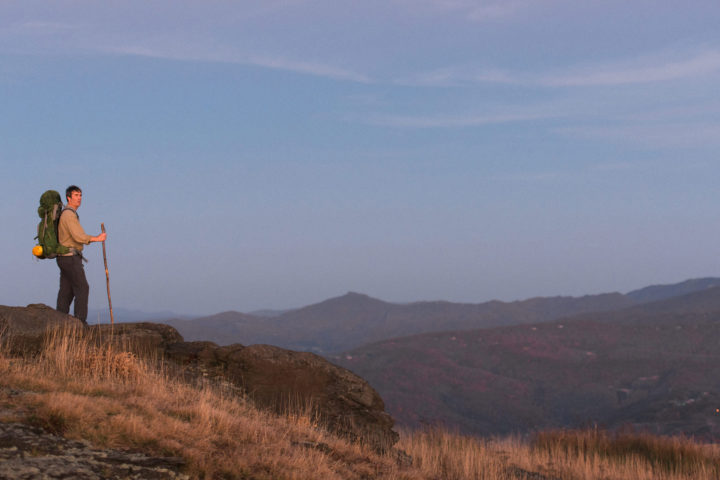
ATC's Official Blog
A.T. Footpath
Learn more about ATC's work and the community of dreamers and doers protecting and celebrating the Appalachian Trail.
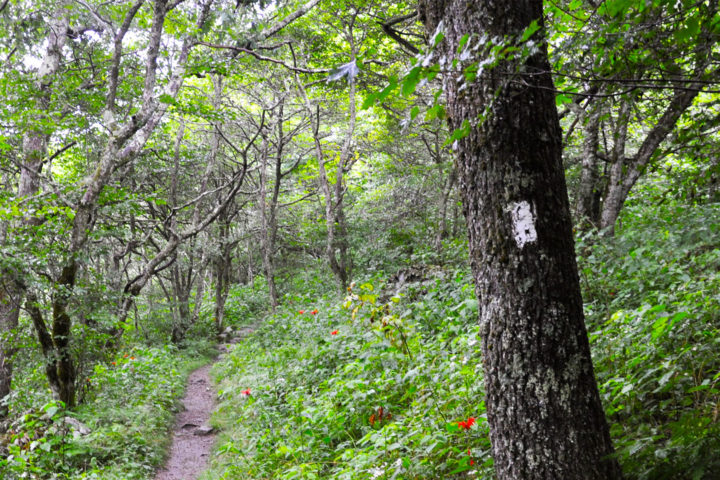
Stay Safe and Healthy
Responding to COVID-19
Learn how ATC is working to help mitigate the spread of COVID-19 on the Appalachian Trail.
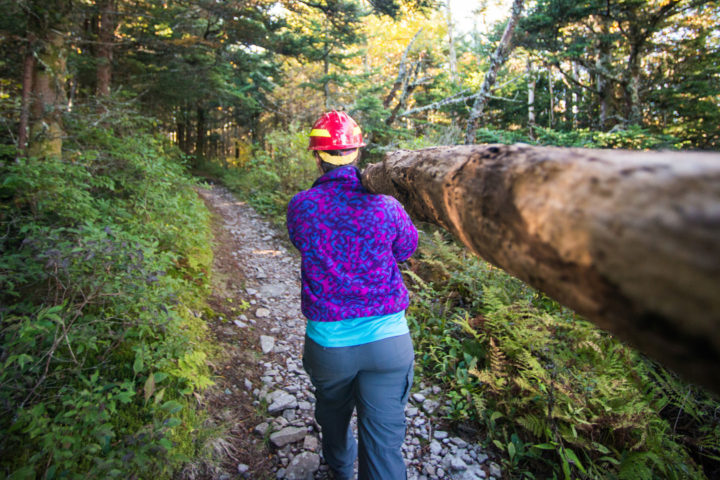
Stay Informed
Latest News
Read the latest news and updates about the Appalachian Trail and our work to protect it.

